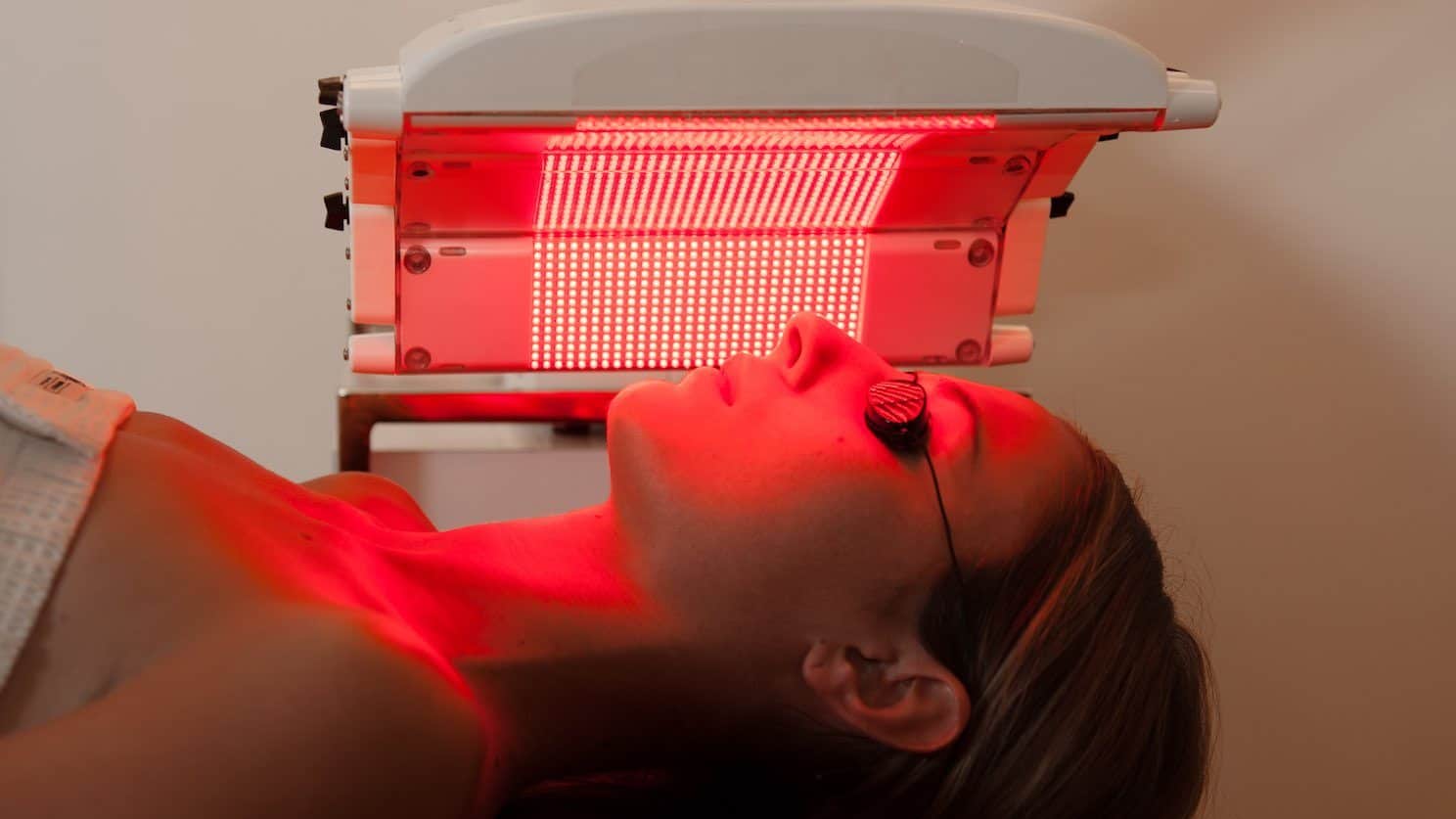Red light therapy is a new (or at least new-ish) approach to skin rejuvenation. The benefits of red light therapy were discovered at NASA where researchers found that the light rays helped heal wounds and burns. Like many space-age breakthroughs such as freeze-dried food, thermal blankets, and even hand-held vacuum cleaners, red light therapy has returned from the outer limits of the galaxy and splashed down into the consumer marketplace.
“Red light easily penetrates the dermis and can help with a variety of skin conditions,” Jo Martin, clinical director of the UK’s Mapperley Park Clinic and an expert in light therapy, told the Daily Mail in a recent article. Proponents say it is effective in
- Fighting acne
- Soothing Rosacea
- Reducing scarring
- Combatting eczema
- Improving skin quality
How Red Light Therapy Works
The heat and light in this non-invasive approach to skin care boosts circulation. This brings additional blood and nutrients to the affected area, helping it heal and rejuvenate. It also triggers the release of chemical messengers called cytokines. As more cytokines are released, fibroblasts leap into action and begin producing collagen.
Skin that has been damaged will heal with the help of red light, while skin that is already healthy will undergo a plumping effect from the extra collagen created.
Do It Yourself?
One of the biggest advancements in red light therapy is the development of devices that consumers can use at home. The difference between an at-home treatment and clinical therapy is the strength of the light used. In a clinical setting, a treatment can deliver red light through 1,800 separate LEDs, while a hand-held consumer uses as few as 40 LED’s.
Light in the infrared range has been used for decades in various pain therapies and dermatological therapies. Research into the safety of these earlier LED red light therapy devices shows that there is no significant risk of injury when the light is used at the intensity found in a properly functioning red light fluorescent bed found at tanning salons.
If you’re light sensitive, pregnant or epileptic, however, red light therapy is not recommended for you.
Cost and Commitment
In order to make red light therapy effective, you will need to commit to daily sessionsduring the first few weeks of treatment. After a while, treatments can be cut to every other day. Once optimal results have been achieved, a maintenance program of 1 to 2 sessions per week will usually suffice.
The average patient spends about $300 per month to get a regular dose of infrared technology.
The Jury Is Still Out
The use of red light has some scientific backing, but the claims of red light fluorescent bed manufacturers regarding wrinkle reduction and collagen development are, as yet, scientifically unsubstantiated. Therefore, you should not experiment with red light therapy without first consulting a trusted medical professional.
